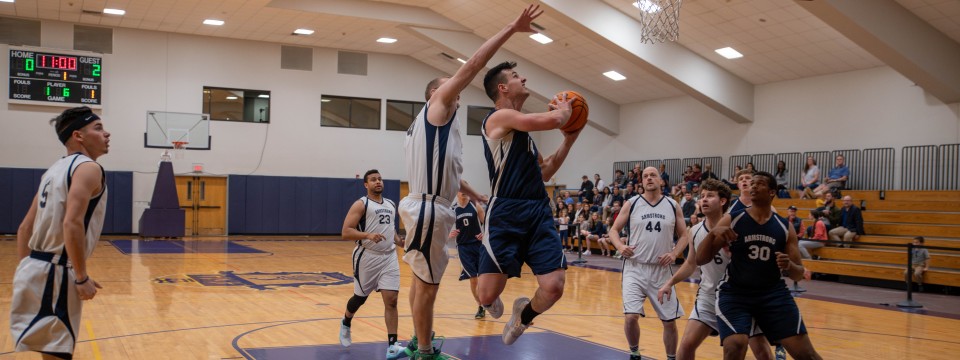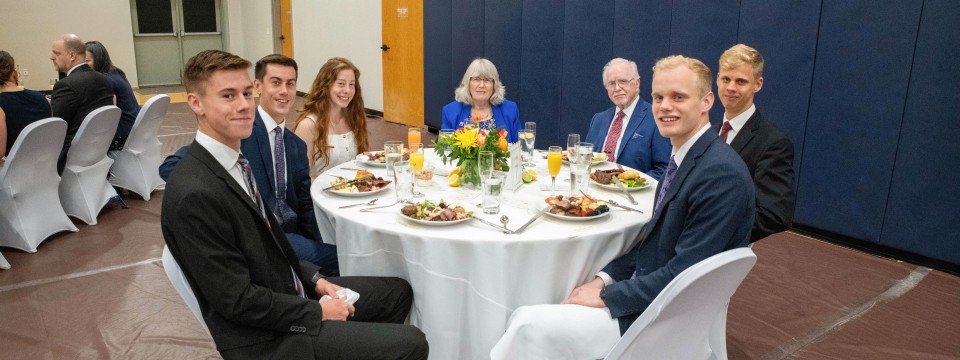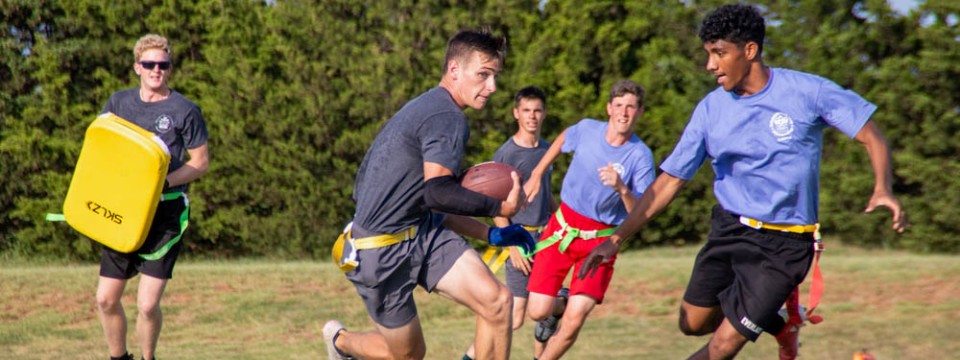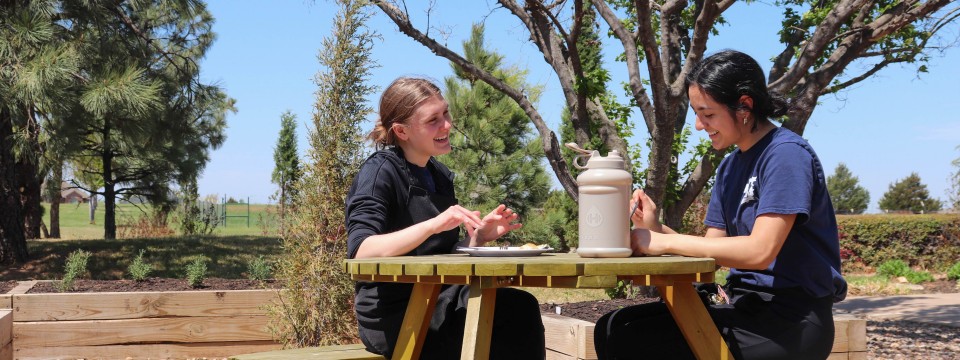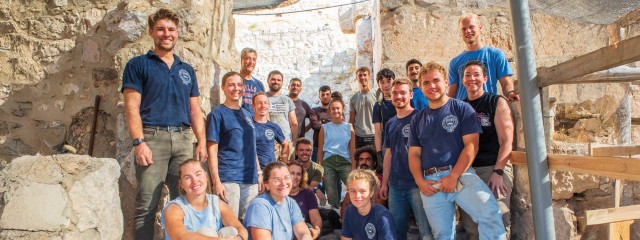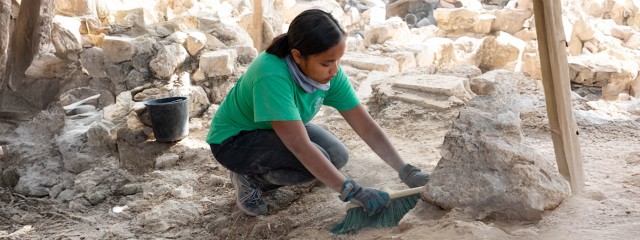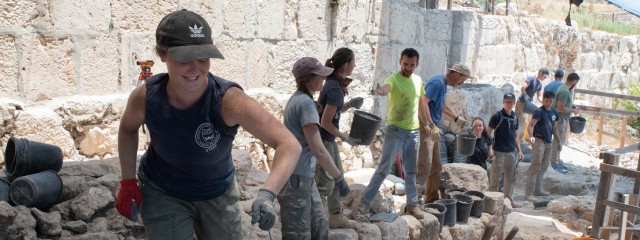Since 2006, Herbert W. Armstrong College has participated in archaeological excavations in Jerusalem, partnering with the late Dr. Eilat Mazar, a prominent Israeli archaeologist, and Hebrew University.
Between 2006 and 2008, the college contributed a handful of students who participated in phases two and three of Dr. Mazar’s excavations at the summit of the City of David and who also helped discover Nehemiah’s wall. A pair of graduates assisted in the first phase of Dr. Mazar’s Ophel excavations in late 2009 and early 2010. The college contributed a group of 16 students and alumni for the second phase, which lasted from August 2012 to January 2013. Another group of seven went in the summer of 2013 to continue work on the second phase. It was during this time that the Menorah Medallion was discovered. In early 2018, 12 students and graduates assisted in completing the second phase of the Ophel excavation. The Ophel and the City of David are located just south of the Temple Mount in Jerusalem.
Following the death of Dr. Mazar in May 2021, AC has continued the archaeological legacy of Eilat on the Ophel by working in partnership with Prof. Uzi Leibner, Dr. Orit Peleg-Barkat and Hebrew University. In 2022, Armstrong College contributed 10 volunteers to excavate the Ophel. In 2023, we sent 14 volunteers and 15 in 2024.
Armstrong students have helped excavate key discoveries, including King David’s palace, Nehemiah’s wall, and the Solomonic wall, usually participating for the duration of each excavation season, lasting from two to six months. AC graduates have been assigned to work as area supervisors, a position often held by an individual with an extensive background and a degree in archaeology. Experienced graduates train new AC volunteers in field work, and Dr. Mazar always said the Armstrong volunteers were valuable to her team—something Professor Leibner and Dr. Peleg-Barkat have also expressed. Armstrong students and graduates also produce content for the Armstrong Institute of Biblical Archaeology, a nonprofit, academic and education institution headquartered in Jerusalem, Israel.
While in Israel, students also become immersed in biblical history, taking field trips to museums and ancient sites such as Caesarea, Capernaum, Megiddo, Hazor and Shiloh, as well as to sites like the Dead Sea, the Mediterranean coast and other destinations. They experience Israeli culture and learn Hebrew to differing degrees.
The college’s archaeological involvement continues a partnership that existed between Herbert W. Armstrong and Dr. Mazar’s grandfather, Prof. Benjamin Mazar of Hebrew University. In 1968, after Israel won control of the Temple Mount area, Professor Mazar began excavating Jerusalem, winning an Israel Prize for Jewish studies, and partnering with Mr. Armstrong and Ambassador College the same year. Groups of up to 70 Ambassador students went to Jerusalem to serve in Professor Mazar’s workforce on the eight-acre “Big Dig.” The joint partnership between Ambassador College and Hebrew University lasted for a decade.
On January 15, 2012, the “Seals of Jeremiah’s Captors Discovered” exhibit opened in Armstrong Auditorium. The archaeological exhibit featured First Temple Period artifacts, including two clay seals once used by Judean princes who persecuted the Prophet Jeremiah in the sixth century B.C. The princes are mentioned together in Jeremiah 38:1. Approximately 4,592 visitors came through the exhibit between its opening in January 2012 and its close in October 2015.
On June 10, 2018, our second exhibit, the “Seals of Isaiah and King Hezekiah Discovered,” opened to the public. This exhibit showcased the personal seals of King Hezekiah and the Prophet Isaiah, along with around 30 other First Temple Period artifacts. Nearly 8,000 visitors toured the exhibit in the nine months it was open.
Our third exhibit, “Kingdom of David and Solomon Discovered,” opened in Armstrong Auditorium on Feb. 25, 2024. This exhibit brings together the abundant archaeological evidence that the kingdom of David and Solomon was monumental, showcasing the world-renowned Tel Dan Stele. This exhibit will be in Edmond, Oklahoma, through April 2025.
The college continues to contribute funding and labor to biblical archaeology work in Jerusalem.

